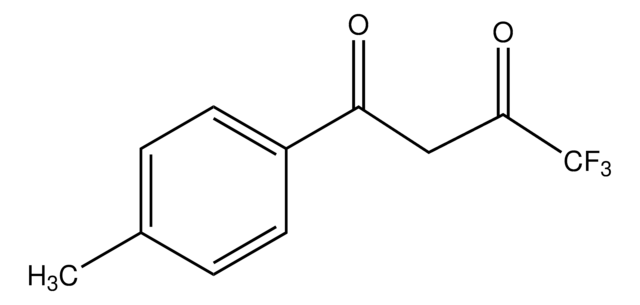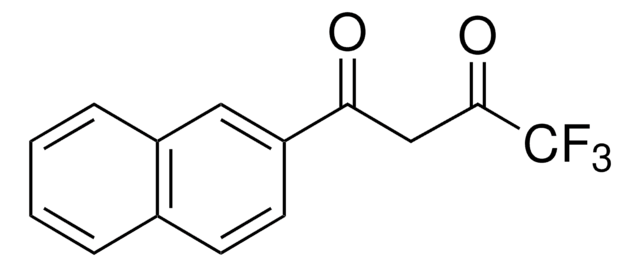217042
4,4,4-Trifluoro-1-phenyl-1,3-butanedione
99%
Sinonimo/i:
BTA
About This Item
Prodotti consigliati
Saggio
99%
Forma fisica
solid
P. eboll.
224 °C (lit.)
Punto di fusione
38-40 °C (lit.)
Solubilità
95% ethanol: soluble 25 mg/mL, clear, colorless to yellow
Stringa SMILE
FC(F)(F)C(=O)CC(=O)c1ccccc1
InChI
1S/C10H7F3O2/c11-10(12,13)9(15)6-8(14)7-4-2-1-3-5-7/h1-5H,6H2
VVXLFFIFNVKFBD-UHFFFAOYSA-N
Applicazioni
Codice della classe di stoccaggio
11 - Combustible Solids
Classe di pericolosità dell'acqua (WGK)
WGK 3
Punto d’infiammabilità (°F)
210.2 °F - closed cup
Punto d’infiammabilità (°C)
99 °C - closed cup
Certificati d'analisi (COA)
Cerca il Certificati d'analisi (COA) digitando il numero di lotto/batch corrispondente. I numeri di lotto o di batch sono stampati sull'etichetta dei prodotti dopo la parola ‘Lotto’ o ‘Batch’.
Possiedi già questo prodotto?
I documenti relativi ai prodotti acquistati recentemente sono disponibili nell’Archivio dei documenti.
I clienti hanno visto anche
Il team dei nostri ricercatori vanta grande esperienza in tutte le aree della ricerca quali Life Science, scienza dei materiali, sintesi chimica, cromatografia, discipline analitiche, ecc..
Contatta l'Assistenza Tecnica.








